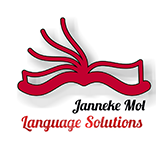What is the difference between a literal and a verbatim transcription?

What is the difference between a literal and a verbatim transcription? This article explains both, clearly and practically, so you can choose the format that suits your project best.
When you request a transcript, you may be asked: do you want it literal, verbatim, or summary? It might sound like a technicality, but the format you choose makes a real difference to how usable the end result is.
A literal transcription is something very different from a verbatim transcription. Here is what sets them apart and when each one works best.
Literal transcription (true verbatim): everything is written down
This version includes every single element of speech:
- pauses
- repetitions
- slips of the tongue
- filler words like “um”, “you know”, “so”, “like”
It is a raw, forensic record of the conversation. This format is ideal for:
- legal transcripts
- linguistic research
- speech analysis
- any context where exact language matters
It is less easy to read, but extremely precise.
Verbatim transcription (edited): complete, but clean
This version includes everything that was said, but without the noise:
- disfluencies and filler words are removed
- minor grammatical errors are smoothed out
- the message is preserved, but the delivery is improved
This format is ideal for:
- interviews
- podcasts
- publications or internal use
- academic or business analysis
It gives you a professional, accurate transcript that reads well but remains faithful to the original.
Which should you choose?
| Purpose | Best option |
|---|---|
| Legal or linguistic accuracy | Literal transcription |
| Clear, readable full transcript | Verbatim transcription (edited) |
| Just the general idea | Summary transcription |
Not sure? I can help you choose based on your audience and your goals.
Still have questions? I will gladly help
Whether you need a clean transcript or a detailed one, you will get a version that suits the situation, not a one-size-fits-all template.
Send me your recording or a sample and I will help you decide what makes sense.
This article was written by Janneke Susanne Mol, copywriter, translator, and transcriber at Janneke Mol Language Solutions. With a background in journalism and English language and literature, I help businesses communicate clearly, confidently, and in their own voice — in both Dutch and English.
Got questions about language, copy, or translation? Feel free to get in touch. No pressure, just thoughtful answers.



